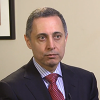Premier - Local Orthopaedic Surgeon
-
Trigger Finger
Trigger finger is a condition in which one of your fingers gets stuck in a bent position. Your finger may bend or straighten with a snap — like a trigger being pulled and released. Trigger finger is also known as stenosing tenosynovitis.
-
Trigger finger treatment options
Some Trigger Fingers will resolve spontaneously. Splinting of the affected digit for a brief period may help resolve the symptoms. Over the counter anti-inflammatories may also help to relieve pain and inflammation.
The first line of treatment for most patients is a cortisone injection into the A-1 Pulley of the affected digit.









